
WillhiteWeb.com
Mount Scott Lookout History
In the winter of 1924/25 a three way agreement was made to build a lookout on Mt. Scott. The National Park would build the structure when funds became available and phone line while the salary of the lookout person would be split between the National Forest and Indian Affairs. All three had land that would benefit from the site.
In 1925, the lookout was Lester Smith, who laid out telephone line with a crew in route to the lookout. Under the arrangement the Park Service furnished tent quarters, necessary furniture, fire finding apparatus, telephone communication, and packing service to the lookout. The results and management of the cooperate were not great during the season but all parties wanted to continue
In 1927, the lookout was L.O. Wright
.
In 1928, the lookout reported 7 fires on the reservation, 1 on the Crater National Forest and 2 on Association territory during the month of August.
In 1929, materials were being delivered to Mt. Scott to build the lookout house. The lookout Mr. Wright offered to build it and did a large amount of the construction by the end of the fire season. An inspector reported his work to be a first class job.
In 1933, the lookout was William Morningstar, a three mile trail was required from the end of the auto road. In July, a Ranger Elgan took a group of 13 CCC recruits to the summit of Mt. Scott. The boys, according to Elgan, thought the climb, and especially the descent, were great fun. Many of them slid down steep snow slides, despite warnings of the danger involved, and a number of snow battles were in progress during the day.
In 1934, the CCC moved a 1000 gallon water storage tank to the lookout. At a cost of $144.16, and 38 man days of labor were required to complete the job on September 4th.
In 1935, the lookout was Rowland Ulrich of Klamath Falls. The peak was still a co-operative lookout between Crater Lake National Park and the Klamath district (Rogue River National Forest).
In 1938, Francis G. Lange, Resident Landscape Architect discussed with Chief Ranger C. Couch the need of improving the appearance of the fire lookout. The building needed a new coat of paint on the exterior surface as well as the roof area. He suggested this to make the structure more attractive as well as increase the life of the structure. He thought that about ten gallons of brown paint would properly do the job, and several gallons of green paint would be needed for the roof. They considered it might be possible to do it as a CCC material purchase or thru direct park purchase. If not the CCC enrollees, he suggested it might be desirable to employ the ranger on duty at the lookout as there should no doubt be sufficient time to do the work as a means of his daily work program.
He said as one drives about the Rim Road the presence of the glaring white painted structure is predominate on the landscape. The building was in need of repair and this proposed painting would be part of the improvement.
In 1939, the park files memo to the Superintendent said the following: The Mt. Scott Lookout has taken a terrific beating from the elements on this peak, particularly during the winter months. It is the old cupola type of structure with living and storage quarters underneath the cupola which is only 6 foot by 6 foot square. The cupola is reached by an almost vertical ladder inside of the building from the lower room. Both the cupola and the living room are very cramped. At the time this lookout was constructed it conformed to the latest specifications for such buildings; but with the expanded uses and facilities of present day lookouts it does not meet the requirements. Visitors to the lookout, radio equipment, fire protection maps and plans and other present day developments can find no place in the present building. Mt. Scott represents one of the two detection points in the park absolutely required in fire protection. There is no point on the east side of the park inside or out which can replace Mt. Scott. This being the case, it would appear that the time has come to replace the present lookout structure with a modern building before the upkeep and maintenance cost of the present structure becomes prohibitive considering the initial cost of the investment. Your attention is directed to the present method of supplying water and sanitation for Mt. Scott. Several years ago, a wooden tank was erected on the peak just below the ridge top for the purpose of collecting the winter snows which, it was thought, would produce a water supply for the lookout. This method required an open top tank which failed to collect sufficient snow to produce a water supply and what water did collect became an attraction for rodents which collected therein. It is suggested that serious consideration be given to constructing a corrugated iron catchment and concrete tank system of a water supply for the mountain. A quarter of an acre catchment and a 1000-gallon tank would probably supply sufficient water for a seasons operation. Such a system, requiring as it does comparatively little maintenance, would liquidate itself in the course of a few seasons from a saving effected by the elimination of the present method of packing water to the lookout every two weeks and at times every week during the fire season. The present sanitation facilities for Mt. Scott consist of one pit toilet which is in fairly good condition and which in past years sufficed. With an increase in the number of visitors to this point made up of mixed groups, it is recommended that consideration be given to the installation of chemical toilets within the lookout itself, similar to the facilities in the Watchman. Such facilities could be installed in the lower part of the proposed structure and at the same time leave sufficient room for compressed gas installations and bulk storage.
In 1939, a new ultra high frequency radio was installed at Mt. Scott lookout. 'With portable batteries, a set weighed only eighteen pounds and was easily transported across country.
In 1944, the park superintendent Leavitt was still soliciting Chief Forester Coffman and Regional Forester Sanford for their support for the construction of a new fire lookout station
In 1946, J.C. Crouch, Chief Ranger said the following, Structurally the plan seems sound to me and quite adaptable to the site. The advantages of cutting the entire building before cartage to the mountain are obviously many. There is only one point that is not clear to me with respect to the structure, and that pertains to the plywood floor. It may be that novelty of such construction is the thing that seems odd to me, but I for one should like more information on that particular detail. It is assumed that such a floor will be laid as a mosaic or in a tessellated fashion. With respect to the design, the first thing which struck me was the pitifully small amount of space for storage. No provision has been made for such things as flamo tanks, storage space for bulk provisions, water, etc. it would be too bad to clutter the observation room with such things. Then, too, if this prefabricated structure is placed on the mountain as shown, some visibility will be lost, since this building is not as high as the present structure or Watchman. It seems to me sufficiently important that consideration be given to designing a rock basement or rock wall footing which will serve as a basement on which to place this type of observation room. Such a basement with a door and windows would serve admirably for storage, flamo tank installation, and water tank if one is provided. Which brings up the point of water. I think we should make some arrangement by which the cartage of water could at least be reduced. It is well enough to design the lookout to reduce transportation to a minimum but we should look a little further ahead for a reduction of transportation required in the operation of this station. The least we can do, it seems to me, is to use the roof of this building for catchment purposes, install a pipe from there to a tank in the basement. Such water could be used for domestic purposes and would probably make it necessary to transport only water for drinking.
In 1949, B. Sanford (Regional Forester) said the following: I visited the Mt. Scott lookout and found the station in even a worse dilapidated condition than it had been at the time of my last visit. It is a wonder that the building still stands, and the floor is so shaky that any accurate observation with a fire finder is impossible. The fire finder instrument is a very old model and in poor shape so that with the construction of a new lookout there should be a new fire finder.
In 1949, W.R. Howe (Park Ranger) also described the general condition of the building as very poor, saying the outside was once painted brown but no vestige of paint remained. He said, the inside was long ago painted a dark green which coupled with only four small windows making a very dark living quarters. The windows were located in the four sides but the one on the south had the top pane blocked out to allow the stove pipe to go through to the outside. The flooring was badly splintered making it very difficult to keep clean. The small wood stove is located along the south wall and had an unusable oven. Fires could be built in the stove only when the wind is from the North or East. If the wind was from the South or West, smoke fills the room when a fire was built. A small flamo three burner hot plate was located in the southwest corner of the living quarters but combustion has been very incomplete thus all cooking pans were covered with carbon. Wood for the stove had been very scarce being secured from old pieces of lumber and down branches. Storage space was very limited consisting only of one cupboard and a set of shelves. The bed was a rope spring affair built in the northeast corner of the room. The windows in the cupola were all loose and did not swing on their hinges as the screws had rotted out of the frame. The wind blew at will through cracks in the building making conditions very uncomfortable for any one in the quarters. The pit toilet was located fifty yards away on the northeast slope and had no door and had large cracks in the walls. The water supply was secured from snow remaining on the mountain and by packing it up from other sources. No model name or number was found on the fire finder but it was an Osborne with a date on the base of 1917. The fire finder ring was broken, the tape had been repaired several times and was also broken. There was no vertical angle on the instrument and the map has warped due to dampness. The fire finder stand located in the cupola was 3 feet 2 inches high by 1 foot by 7 inches wide by 11 inches deep and is constructed of 2 inch by 2 inch pieces for legs and 1 inch by 2 inch pieces for cross braces. The stand was only nailed to the floor. The rails for the fire finder were loose and could not be tightened due to the condition of the wood. The stand is very unstable and it was impossible to get an accurate shot on a smoke especially if a wind was blowing. When the wind blew the cupola rocks and swayed and the wind whistled through the cracks. Mt. Scott had 180 visitors since the opening on July 9 to the closing on September 9.
Just before closing, L.W. Hallock, Chief Ranger, reported the following conditions: Some difficulty was experienced during the heavy lightning storms in securing effective service from the Mt. Scott lookout. This failure is in no way attributable to the personnel involved but is due to the condition of the building and its detection equipment. The lightning storms produced many strikes in the park and on adjacent Forest Service and Indian Agency lands directly visible to Mt. Scott. There were also several fires caused by this lightning on these lands which Mt. Scott lookout might have efficiently assisted in locating if the building was a stable one and the detection equipment of modern design. The lookout on duty, while reporting some of these lightning caused fires most faithfully, could not give accurate and dependable data. In one instance, the reported azimuth was 20 degrees in error. An effort was made to correct this but it could not be fully accomplished under the circumstances. The present structure is dangerous to personnel assigned to it because of the cupola design and the necessity of using a trap door entrance to the cupola. The lookout assigned to Mt. Scott this year was injured by falling through the open trap door. This feature should be entirely eliminated in any new structure.
In February, 1950, B. Sanford, the Regional Forester said, I was very surprised upon reading the 1951 Construction Program to find that the new Mount Scott Lookout had been omitted and, upon further inquiry, find that it has been placed in the 1952 program.
The last time I was shown the Regional priorities the Mount Scott Lookout was at the top of the Crater Lake building program and I was assured that it would come up for construction during the 1951 fiscal year. Memoranda have been coming in from Crater Lake and from visiting foresters for the past several years commenting upon the condition of the old antiquated building now serving as a lookout and the inability of the lookout observer to take accurate sights on fires with his fire-finder in the shaky structure now in use. Each season for the past several years we have expected to find this old building completely wrecked and I feel that fire control in Crater Lake and the neighboring Forest Service and Indian Service areas which depend upon Mount Scott for the location of fires absolutely requires a new structure this coming season.
In October 1951, bids went out for the construction of a new fire lookout to be built during the following summer. Bidders were encouraged to visit the site before snow falls to familiarize themselves with the site.
In 1952, Mount Scott finally got a new fire lookout, built by the Southern Oregon Construction Company out of Grants Pass, Oregon. The awarded contract for this project was in the amount of $12,603.29 on July 3, 1952. The contractor completed the job on September 26, 1952. During a particular storm in early August, the park had seven fires.
In 1964, the water situation was still the same. R.A. Nelson, Superintendent said that water for Mt. Scott Lookout was obtained from snow through half of the summer. After the snow melts stored melt water is used until approximately the middle of August when water was hauled to the lookout by trail packer. This was somewhat expensive and the use motor equipment was objectionable. Also, water must be conserved carefully which is unpleasant, especially for hikers arriving at the lookout after the climb.
For hiking information, see:
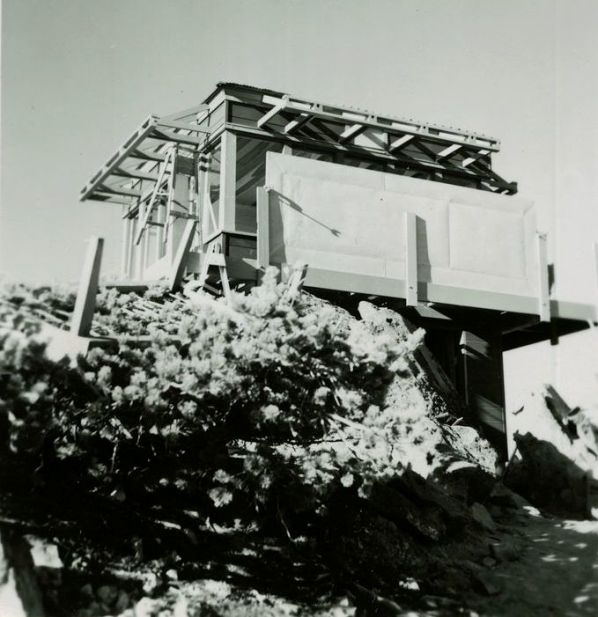
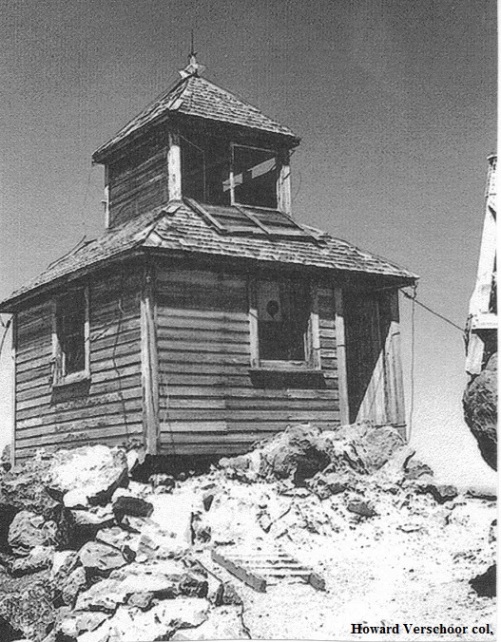
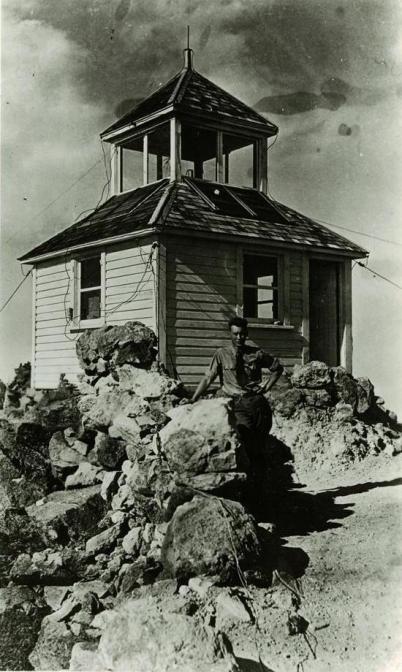
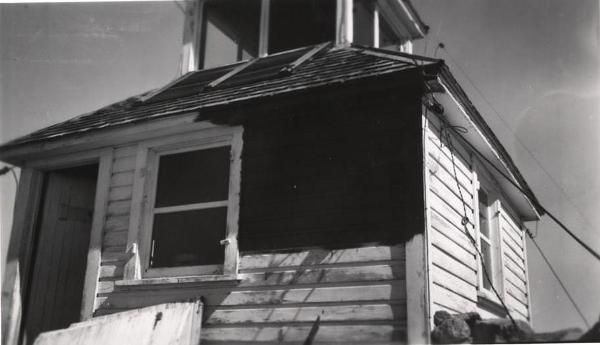
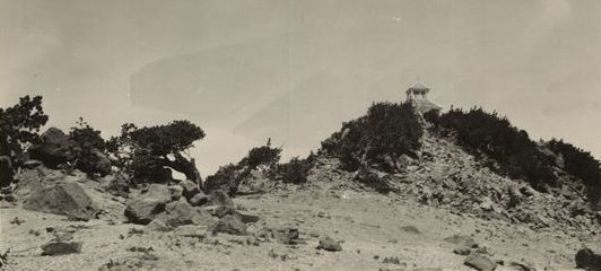
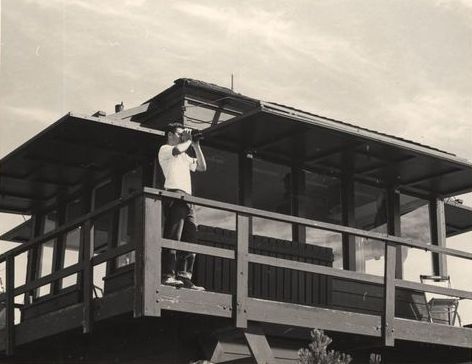
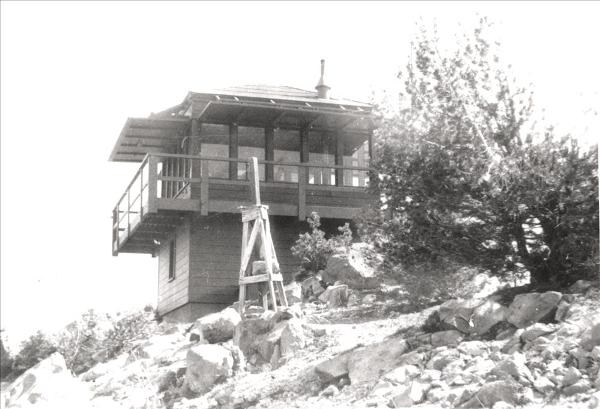
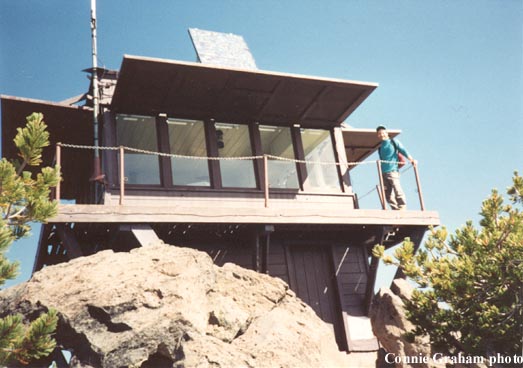
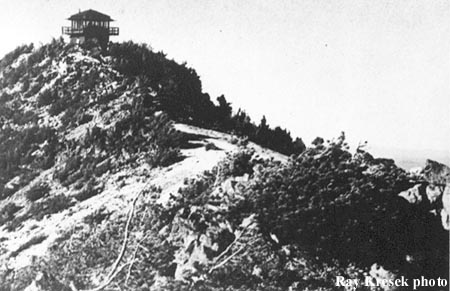
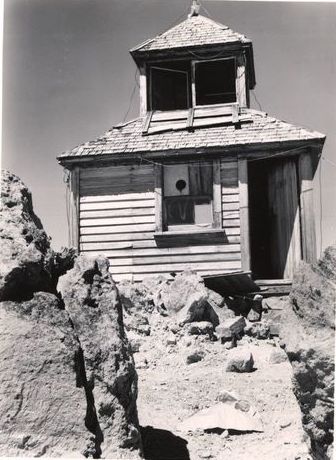
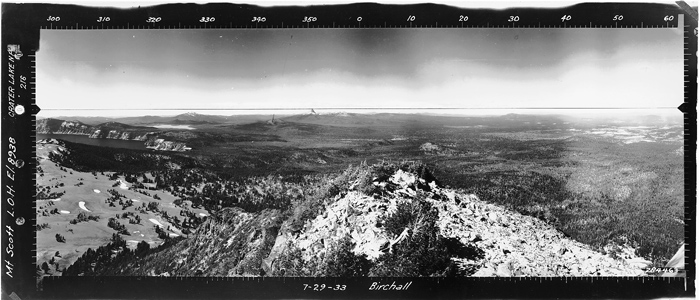
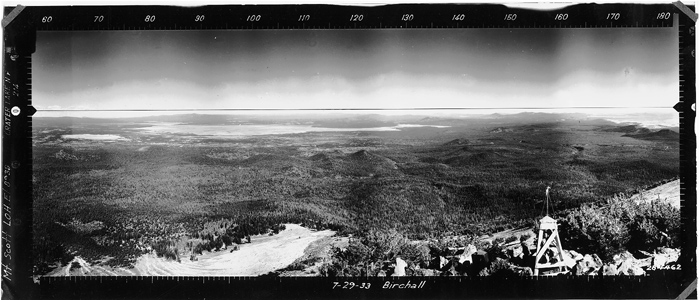



Around 1935
Under construction
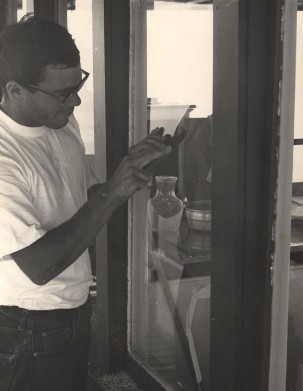
View from lookout, date unknown
1920s
North view July 9, 1933
Southeast view July 9, 1933
North view 1936
Southeast view 1936
Southwest view 1936
1967 lookout Dave Lange
1980
1967 lookout Dave Lange
















